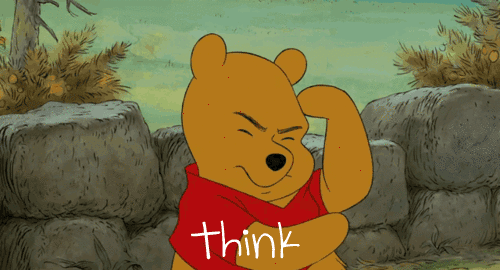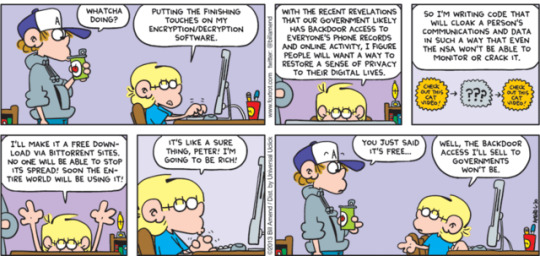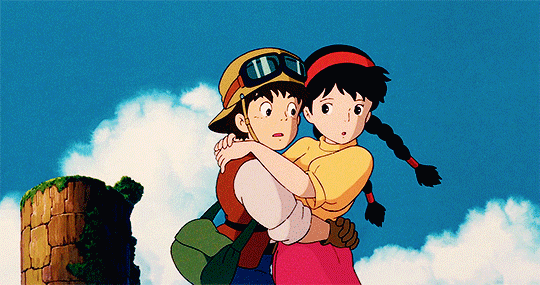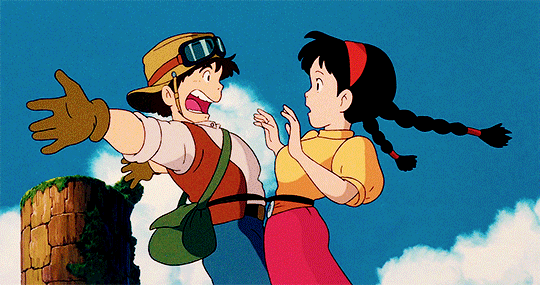#lcit
Explore tagged Tumblr posts
Text
I made an edit, If you could leave a small like that would be nice
youtube
4 notes
·
View notes
Text
The Top 5 Best Places to Work in Thailand for 2024 revealed
BANGKOK, THAILAND – Media OutReach Newswire – 19 December 2024 – Novo Nordisk, AIA Thailand, HSBC, Diversey, and LCIT have been recognized as the top 5 best places to work in Thailand for 2024, according to the prestigious Best Places to Work 2024 certification program. Novo Nordisk, a global leader in healthcare, secured the top position for its exemplary commitment to fostering employee growth…
0 notes
Text
Week 3: Ownership in an e-World
In April of this year, Microsoft announced that its ebook store was going to close (Financial Times). The consequences of this were very different to the closure of a retail bookshop: Microsoft recalled all of the ebooks sold through the store and customers are no longer able to access their purchases. This story highlights some of the difficulties of “online/offline equivalence” that has been applied in the legal context.
The Court of Justice of the European Union (CJEU) applied the logic of “online/offline equivalence” in UsedSoft GmbH v Oracle International Corp ([2012] Case C-128/11), which concerned the copyright principle of exhaustion. Exhaustion means that an author’s distribution right is exhausted by the first sale of a copy of their work and the author is not able to control further sale of that copy.
The CJEU held that the “principle of equal treatment” means that the copyright principle of exhaustion applies “regardless of whether the sale relates to a tangible or intangible copy” of a software program. The Court equated online and offline activities to apply the principle of exhaustion to software.
However, as Nicholson points out, “problems can arise where an activity transported online might appear prima facie to be equivalent to its offline counterpart, but in practice technology has so fundamentally altered the activity that applying existing laws would be harmful” (Nicholson). The situation with Microsoft illustrates the confusion that can arise when offline concepts of ownership are directly lifted and applied in an online context.
Microsoft had allowed customers to “buy” or “rent” ebooks in their online store. The concept of renting an ebook is not too dissimilar to renting a normal physical object (customers purchase access to the item for a defined period of time). However, when a customer chose to “buy” an ebook from Microsoft, they were actually only purchasing access to the product, which Microsoft retained the right to withdraw. This differs from the purchase of a physical book, which customers own and control for as long as they wish. As the Financial Times put it, “[i]n the information age, consumers are often renters with limited control of digital products, even if these have apparently been “sold” to them” (Financial Times).
Accordingly, we must be careful about using offline concepts to describe online “ownership” because the reality of ownership in an e-World is different. The European Court of Justice overlooked this in Usedsoft by taking offline exhaustion and applying it to software. A second-hand market for software, however, can be distinguished from an offline second-hand market. Second-hand software is sold as perfectly as if it were bought brand new when it includes software updates. Why would someone pay more for buying software directly from the supplier, when an equally good version is available more cheaply “second-hand”? By contrast, second-hand physical objects experience wear and tear that is accounted for in the price. It is therefore misleading and confusing to strive for online/offline equivalence, without being cognisant of important differences between offline and online situations.

2 notes
·
View notes
Text
The problem with smart devices...
That things are getting smarter, smaller, and more complicated is an obvious trend and the fact that there are more businesses every day making and selling things is even more so. An interesting effect of all this is things are getting made in such a way that makes it difficult for the average person to understand how it works and becomes less involved in the process and in personal security.

This discussion made me think of this video by Vox about phones and the environment. It discusses the (terrible) footprint of manufacturing these devices, about how we don’t repair or even keep the phones for long, about how these toxic these materials affect our environment, and about how we need to make these phones more sustainable.
These points become increasingly when we think about how everything is being made to incorporate some element of ‘smart’. Companies focus on whether they can sell a product and consumers focus on whether they ‘need’ something to stay current.
But this isn’t how we should think about things in this digitizing of our world. We need to think about if there is an actual need, if we are somehow bettered by having this technology – do we need another plastic based water bottle with a chip that speaks with your phone to remind you to drink? How many resources were used to produce and ship that product, to advertise, to sell, and for the consumer to take home to probably not use for more than a few months? What about the cost of having more products that require electricity? Twitter, who produces no physical products, was listed as one of the least green technology firms, due to their energy usage which largely depends on natural gas (43%), coal (21%) and nuclear (14%) with clean energy only accounting for 10%.

These environmental risks are important and need to be considered alongside risks to the individual such as a loss of agency and skills, dependency on experts, centralisation of power, and a loss of privacy to others, businesses, and the government. The legal challenges shouldn’t be limited to topics such as privacy and protection of copyright, but to the effects to the environment and ourselves psychologically (a discussion for another time).
We need to start thinking critically – what are the benefits, what are the risks right now, and what could these risks lead to in the future? Without these questions (and healthy optimism) we are likely to start trying to solve problems once it’s too late.
1 note
·
View note
Photo



Laputa: Castle in the Sky (1986)
#laputa: castle in sky#ghibliedit#studioghibliedit#studioghibligif#studio ghibli#my gifs#*lcits#pazu and sheeta
630 notes
·
View notes
Text

col. muska sadeghi explains why he needs government funding to major general muro, colorized
@lcits told me to draw board with strings meme with muska so i did.
21 notes
·
View notes
Text
Nothing compares to the excitement I feel when I get a notification that the Laputian has liked one of my posts (two at this point).
Knowing that the OG LCITS fan likes at least a little of my content makes me so happy. <3
Even though we both have different interpretations of Muska, we can both agree he would look fantastic with a sword...
6 notes
·
View notes
Text
ตู้สินค้าผ่านท่า ท่าเทียบเรือต่างๆ ที่ท่าเรือแหลมฉบังเติบโตขึ้น ในปี 2018
ตู้สินค้าผ่านท่า ท่าเทียบเรือต่างๆ ที่ท่าเรือแหลมฉบังเติบโตขึ้น ในปี 2018
ปี 2018 ที่ผ่านมา เป็นอีกหนึ่งปีที่ท่าเรือแหลมฉบัง มีปริมาณ ตู้สินค้าผ่านท่า ที่เติบโตขึ้นจากปีก่อนหน้านั้น แม้การส่งออกของไทย อาจได้รับผลกระทบจากสงครามการค้าที่มีผลต่อการส่งออกไทยในเดือนตุลาคม 2018 เช่น ผลกระทบโดยตรงจากการที่สหรัฐฯ ขึ้นภาษี แต่ก็มีการขยายตัวที่ดีในการส่งออกในตลาดในภูมิภาคเอเชีย เช่น ญี่ปุ่น อินเดีย และ CLMV หรือ กัมพูชา ลาว เมียนมาร์ และเวียดนาม
การเติบโตของการส่งออกนี้…
View On WordPress
#LCB1#LCIT#LCMT#ตู้สินค้าผ่านท่า#ท่าเทียบเรือ#ท่าเทียบเรือ A0#ท่าเทียบเรือ A2#ท่าเทียบเรือ A3#ท่าเทียบเรือ B1#ท่าเทียบเรือ B2#ท่าเทียบเรือ B3#ท่าเทียบเรือ B4#ท่าเทียบเรือ B5#ท่าเทียบเรือ C3#ท่าเทียบเรือ D1#ท่าเทียเรือ C1 C2#ท่าเรือแหลมฉบัง#ที ไอ พี เอส#อีสเทิร์นซี แหลมฉบัง เทอร์มินัล#ฮัทชิสัน พอร์ท ประเทศไทย#เอเวอร์กรีน คอนเทนเนอร์ เทอร์มินัล#แหลมฉบัง อินเตอร์เนชั่นแนล เทอร์มินอล#แอลซีบี คอนเทนเนอร์ เทอร์มินัล 1 จำกัด
0 notes
Photo

Who can access our backdoor? Do we have any idea?
Photo source: here
1 note
·
View note
Text
Week 5: Be you never so high, the law is above your meme
President Donald Trump’s Twitter feed hit the news again this month. This time, it was not for a controversial comment but for a copyright violation. He had shared a meme using a video clip taken from Nickelback (a rock band), having edited it to include a photograph of Democratic presidential candidate Joe Biden (The Guardian). Fewer than twelve hours after the tweet was posted online, the video was made inaccessible and has been replaced with a message that states “[t]his video has been removed in response to a report from the copyright holder” (Twitter).
The sentiments of Mr Trump’s tweet aside, this story does highlight the legal fragility of memes. This is particularly true in the EU where, following the introduction of Article 17 of the Directive on Copyright in the Digital Single Market, memes occupy a more precarious position compared to the US.
Article 17 provides that online content-sharing services (such as YouTube and Facebook) must obtain authorisation from copyright owners when they give the public access to copyright-protected works or other protected subject matter uploaded by their users. Failure to do so will result in liability, unless the online content-sharing service can show that they did their best: to obtain authorisation; to ensure the unavailability of copyrighted works and to act quickly upon receiving notifications of copyright violations from rightholders.
The problem for internet memes, such as the one used by Mr Trump, is that they often use copyrighted materials (such as photographic works) as their basis and then adapt them to share a particular (often humorous) message. Article 17 does explicitly exclude content that contains “quotation, criticism, review” and “caricature, parody or pastiche” from its scope, which would appear to protect memes.
However, online service providers use automated mechanisms to detect copyrighted works and overenthusiastic filters tend to be biased towards copyright owners and operate on a “guilty until proven innocent basis”. This means that when a copyright owner reports an infringement, the content is removed before the content creator has the chance to object. Even a video of a Harvard professor giving a lecture on copyright was removed by YouTube’s Content ID system for containing clips of Jimi Hendrix’s music (Harvard Law Today, Music:)Ally).
The result is a private enforcement mechanism that exceeds the copyright protections provided by law, with material that does not actually amount to copyright infringement being taken down. The delicate balance between copyright owners and the public, which incentivises the production of creative works whilst providing limitations on owners’ rights, is tilted towards rightholders – to the detriment of creativity on the internet. I do not care for Donald Trump’s politics, but I also do not think that platforms should cede to copyright owners’ assertions to provide them with more rights than those afforded by law.

1 note
·
View note
Link
Artists complain that technology doesn’t allow them to properly exploit copyright in their works. Blockchain (which is becoming increasingly important in the financial and real estate sectors) would help to prevent copying, provide a complete source of information about the song, as well as ensure proper compensation for artists with each play.
This is an article written by an artist, Imogen Heap, which is a fantastic discussion of why we need the technology and what it could do.
1 note
·
View note
Photo

“Memes begin with originators—people who create new memes or the underlying images that will become memes at someone else’s hand. The originators’ work is then taken by derivative authors who create new posts that are similar but slightly different from the original memes. From this point on, future derivative authors either build on previous derivative authors’ work or the original authors’ work and create many strands of memes which are all ultimately connected to the original meme.” - Patel R, “First World Problems: A Fair Use Analysis of Internet Memes”, (2013), UCLA Entertainment Law Review, Vol. 20, No. 2, 2013
1 note
·
View note
Photo



Tenkū no Shiro Rapyuta 天空の城ラピュタ Laputa: Castle in the Sky
#Laputa: Castle in the Sky#ghibliedit#studioghibliedit#studioghibligif#studio ghibli#my gifs#*lcits#pazu and sheeta
1K notes
·
View notes
Text

had this convo with @lcits about how at the end of the movie muska's hair is just unkempt and he has bangs??? and this was the conclusion ... he keeps his hair neat with gel??? so i drew this visual for all of u ...
#orange is not a great color for u honey ...#whats my art tag#castle in the sky#slaps this in the movie tag for the heck of it
14 notes
·
View notes